Your cart is currently empty!
Tag: Maintenance
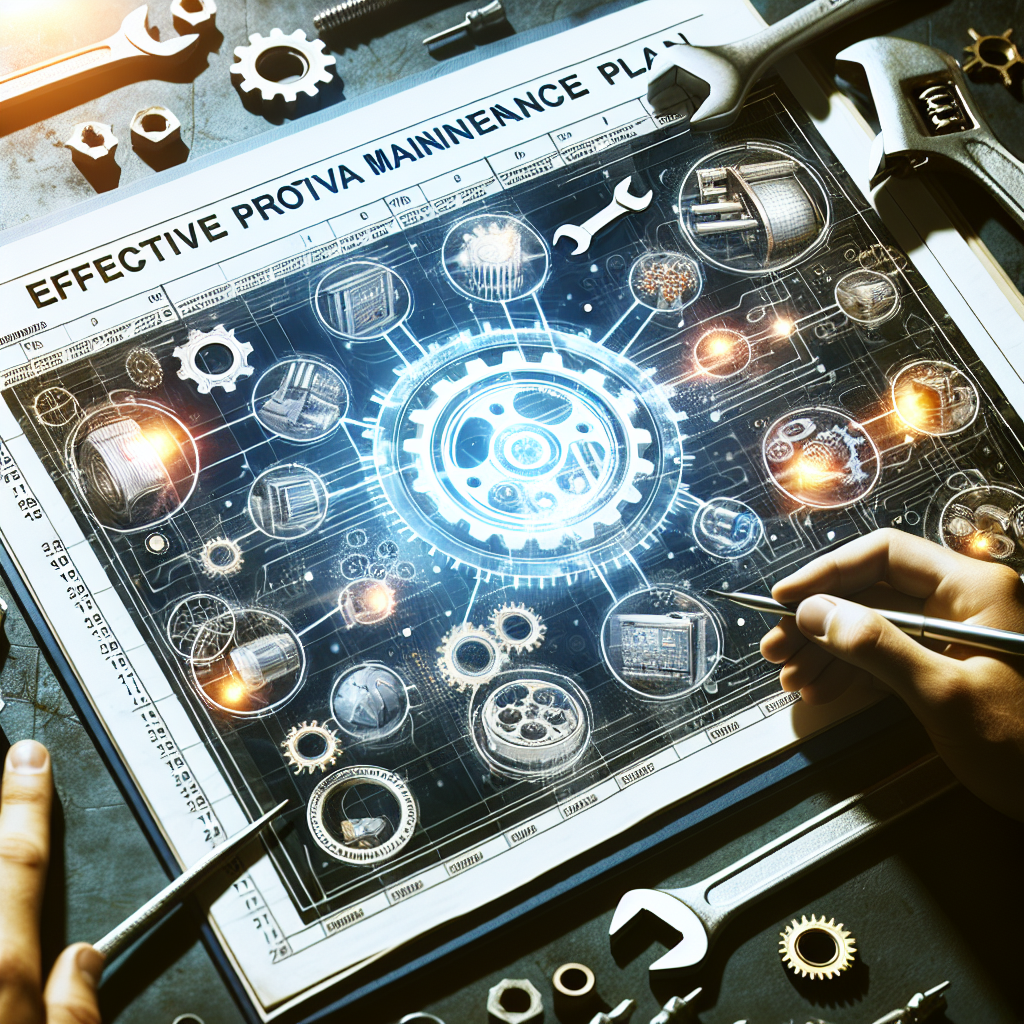
Tips for Creating an Effective Proactive Maintenance Plan
Proactive maintenance is a crucial aspect of any successful maintenance strategy. By anticipating and addressing potential issues before they become major problems, businesses can save time, money, and resources in the long run. Creating an effective proactive maintenance plan is key to ensuring the smooth operation of equipment and machinery, as well as maximizing their lifespan.Here are some tips for creating an effective proactive maintenance plan:
1. Conduct a thorough assessment: Before developing a proactive maintenance plan, it is important to conduct a thorough assessment of all equipment and machinery. Identify potential failure points, common issues, and areas that require regular maintenance. This will help you prioritize tasks and allocate resources effectively.
2. Set clear goals and objectives: Define clear goals and objectives for your proactive maintenance plan. These could include reducing downtime, extending the lifespan of equipment, and improving overall productivity. Having clear goals in place will help you stay focused and measure the success of your maintenance efforts.
3. Develop a schedule: Create a detailed maintenance schedule that outlines all the tasks and activities that need to be performed regularly. This schedule should include routine inspections, lubrication, cleaning, and any other maintenance tasks that are necessary to keep equipment running smoothly. Make sure to allocate enough time and resources for each task to ensure they are completed on time.
4. Use technology to your advantage: Take advantage of technology to streamline your proactive maintenance plan. Utilize maintenance management software to track equipment performance, schedule maintenance tasks, and generate reports. Implementing a computerized maintenance management system (CMMS) can help you stay organized, reduce paperwork, and improve overall efficiency.
5. Train your staff: Ensure that your maintenance team is properly trained in performing proactive maintenance tasks. Provide ongoing training and support to help them stay up-to-date on the latest maintenance techniques and best practices. Encourage open communication and collaboration among team members to ensure that everyone is on the same page.
6. Monitor and evaluate performance: Regularly monitor the performance of your proactive maintenance plan and evaluate its effectiveness. Keep track of key performance indicators such as equipment downtime, maintenance costs, and overall equipment reliability. Use this data to make informed decisions and adjust your maintenance plan as needed.
By following these tips, businesses can create an effective proactive maintenance plan that helps prevent costly breakdowns, extend the lifespan of equipment, and improve overall operational efficiency. Proactive maintenance is a proactive approach that can yield significant benefits for businesses of all sizes.

How Proactive Maintenance Can Extend the Lifespan of Equipment
Regular maintenance is crucial for extending the lifespan of equipment in any industry. Instead of waiting for something to break down or malfunction, proactive maintenance involves taking preventive measures to ensure that equipment stays in optimal condition for as long as possible.Proactive maintenance involves a systematic approach to monitoring, inspecting, and servicing equipment on a regular basis. By identifying potential issues before they escalate, proactive maintenance can save time and money in the long run. Here are some ways that proactive maintenance can help extend the lifespan of equipment:
1. Preventing breakdowns: By regularly inspecting equipment and identifying potential issues early on, proactive maintenance can help prevent costly breakdowns and downtime. This can help avoid production delays and keep operations running smoothly.
2. Increasing efficiency: Proper maintenance can help equipment operate more efficiently, leading to reduced energy consumption and lower operating costs. Regularly cleaning and servicing equipment can ensure that it is running at peak performance levels.
3. Improving safety: Regular maintenance can help identify safety hazards and prevent accidents from occurring. By addressing issues proactively, you can create a safer work environment for employees and reduce the risk of injuries.
4. Extending equipment lifespan: By taking care of equipment and addressing maintenance issues promptly, you can extend the lifespan of your equipment. This can help you get more value out of your investment and avoid the need for costly replacements in the future.
5. Maintaining warranty coverage: Many equipment warranties require regular maintenance to remain valid. By staying on top of maintenance tasks, you can ensure that your equipment remains covered under warranty and avoid any potential issues with warranty claims.
In conclusion, proactive maintenance is essential for extending the lifespan of equipment in any industry. By taking preventive measures to keep equipment in optimal condition, you can prevent breakdowns, increase efficiency, improve safety, and ultimately save time and money in the long run. Investing in proactive maintenance is a wise decision that can help you get the most out of your equipment and keep your operations running smoothly.

Remote Monitoring: A Game-Changer for Asset Management and Maintenance
Remote monitoring technology has revolutionized the way businesses manage their assets and conduct maintenance activities. By leveraging the power of connectivity and real-time data, remote monitoring has become a game-changer for asset management and maintenance.One of the key benefits of remote monitoring is its ability to provide real-time visibility into the performance and condition of assets. With sensors and monitoring devices installed on equipment, businesses can gather data on key metrics such as temperature, pressure, and vibration. This data is then transmitted to a centralized platform where it can be analyzed and used to make informed decisions about maintenance schedules and asset utilization.
By having access to real-time data, businesses can proactively identify issues before they escalate into costly breakdowns. For example, if a sensor detects a sudden increase in temperature in a piece of equipment, maintenance teams can be alerted immediately and take corrective action to prevent a breakdown. This not only helps to minimize downtime but also reduces the need for costly emergency repairs.
Remote monitoring also enables businesses to optimize their maintenance schedules and resources. By analyzing historical data and performance trends, businesses can identify patterns and predict when maintenance is needed. This allows maintenance teams to schedule preventive maintenance activities at the most optimal times, reducing the risk of unexpected failures and maximizing asset lifespan.
Furthermore, remote monitoring can help businesses improve their overall asset performance and efficiency. By monitoring key performance indicators in real-time, businesses can identify opportunities for optimization and make data-driven decisions to improve asset utilization. For example, if a piece of equipment is consistently running below its optimal performance levels, maintenance teams can investigate the root cause and implement corrective actions to improve efficiency.
In addition to improving asset management and maintenance, remote monitoring technology also offers cost-saving benefits. By reducing the need for manual inspections and increasing the efficiency of maintenance activities, businesses can lower their maintenance costs and extend the lifespan of their assets. This not only helps to improve the bottom line but also enhances the overall operational efficiency of the business.
In conclusion, remote monitoring has emerged as a game-changer for asset management and maintenance. By providing real-time visibility, proactive maintenance capabilities, and cost-saving benefits, remote monitoring technology enables businesses to optimize their assets, reduce downtime, and improve overall operational efficiency. As businesses continue to adopt remote monitoring technology, they will be better positioned to stay ahead of the curve and drive success in today’s competitive business landscape.
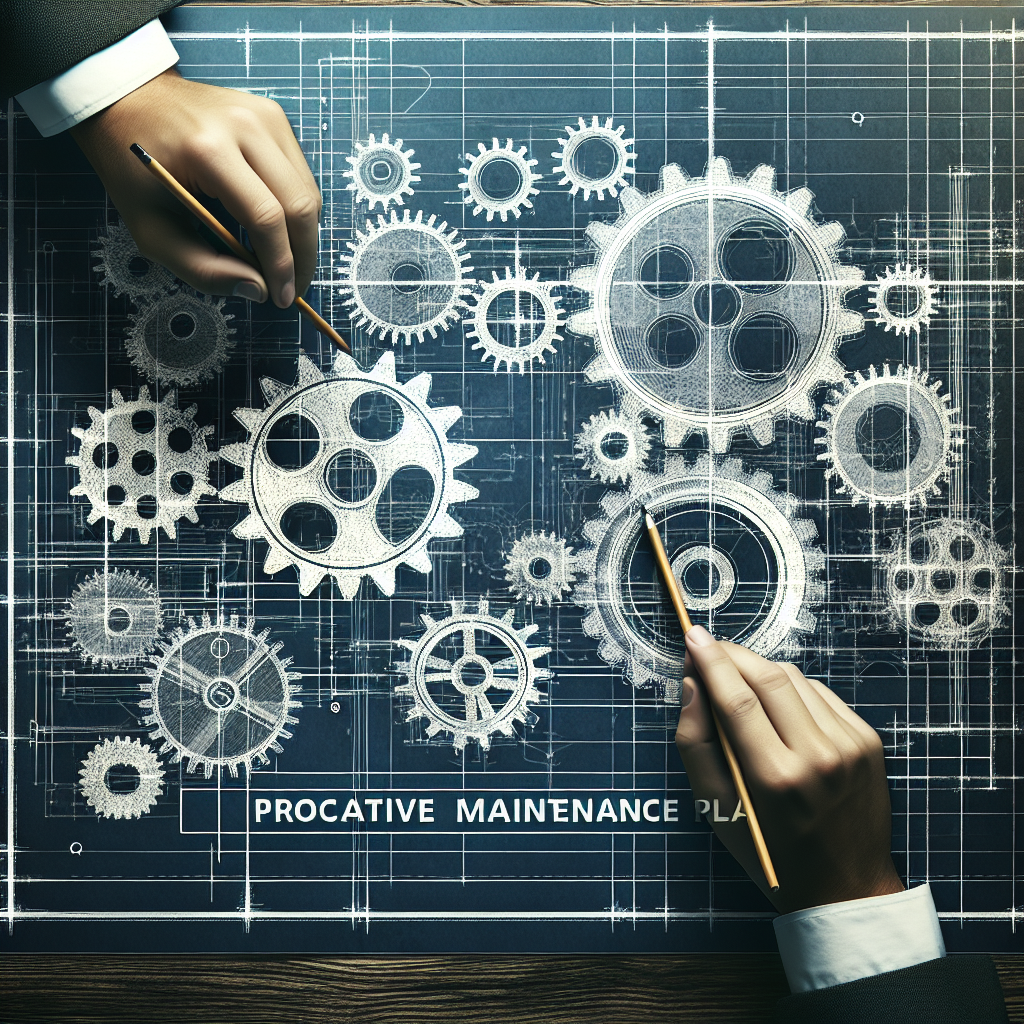
Creating a Proactive Maintenance Plan: Steps to Get Started
Creating a proactive maintenance plan is essential for ensuring the smooth operation of your equipment and facilities. By taking a proactive approach to maintenance, you can identify and address potential issues before they become major problems, reducing downtime and increasing efficiency. Here are some steps to help you get started on creating a proactive maintenance plan:1. Assess your current maintenance practices: Before you can create a proactive maintenance plan, you need to understand your current maintenance practices. Take stock of the equipment and facilities you have, the maintenance tasks that are currently being performed, and any recurring issues that you have experienced. This will help you identify areas that need improvement and guide your proactive maintenance efforts.
2. Identify critical assets: Not all equipment and facilities are created equal. Some assets are more critical to your operations than others and require more attention. Identify the critical assets that are essential to your business and prioritize them in your maintenance plan. Focus your proactive maintenance efforts on these assets to ensure their continued reliability and performance.
3. Develop a preventive maintenance schedule: Preventive maintenance involves performing regular maintenance tasks on a scheduled basis to prevent breakdowns and prolong the life of your equipment. Develop a preventive maintenance schedule that outlines the tasks that need to be performed, the frequency at which they should be done, and the resources required. This will help you stay on top of maintenance tasks and prevent issues before they occur.
4. Implement predictive maintenance techniques: Predictive maintenance involves using data and analytics to predict when equipment is likely to fail so that maintenance can be performed before a breakdown occurs. Implement predictive maintenance techniques, such as vibration analysis, infrared thermography, and oil analysis, to monitor the condition of your equipment and identify potential issues early on. This will help you address problems before they escalate and reduce the likelihood of unexpected downtime.
5. Invest in maintenance management software: A proactive maintenance plan requires proper organization and tracking of maintenance activities. Invest in maintenance management software that can help you schedule and track maintenance tasks, manage work orders, and monitor equipment performance. This will streamline your maintenance operations and make it easier to stay on top of maintenance activities.
6. Train your maintenance team: A proactive maintenance plan is only as effective as the people who implement it. Ensure that your maintenance team is properly trained on the proactive maintenance techniques and tools that you are implementing. Provide ongoing training and support to help them effectively carry out maintenance tasks and contribute to the success of your maintenance plan.
By following these steps, you can create a proactive maintenance plan that helps you identify and address potential issues before they become major problems. Taking a proactive approach to maintenance will not only improve the reliability and efficiency of your equipment and facilities but also save you time and money in the long run. Start implementing these steps today to get started on creating a proactive maintenance plan for your business.
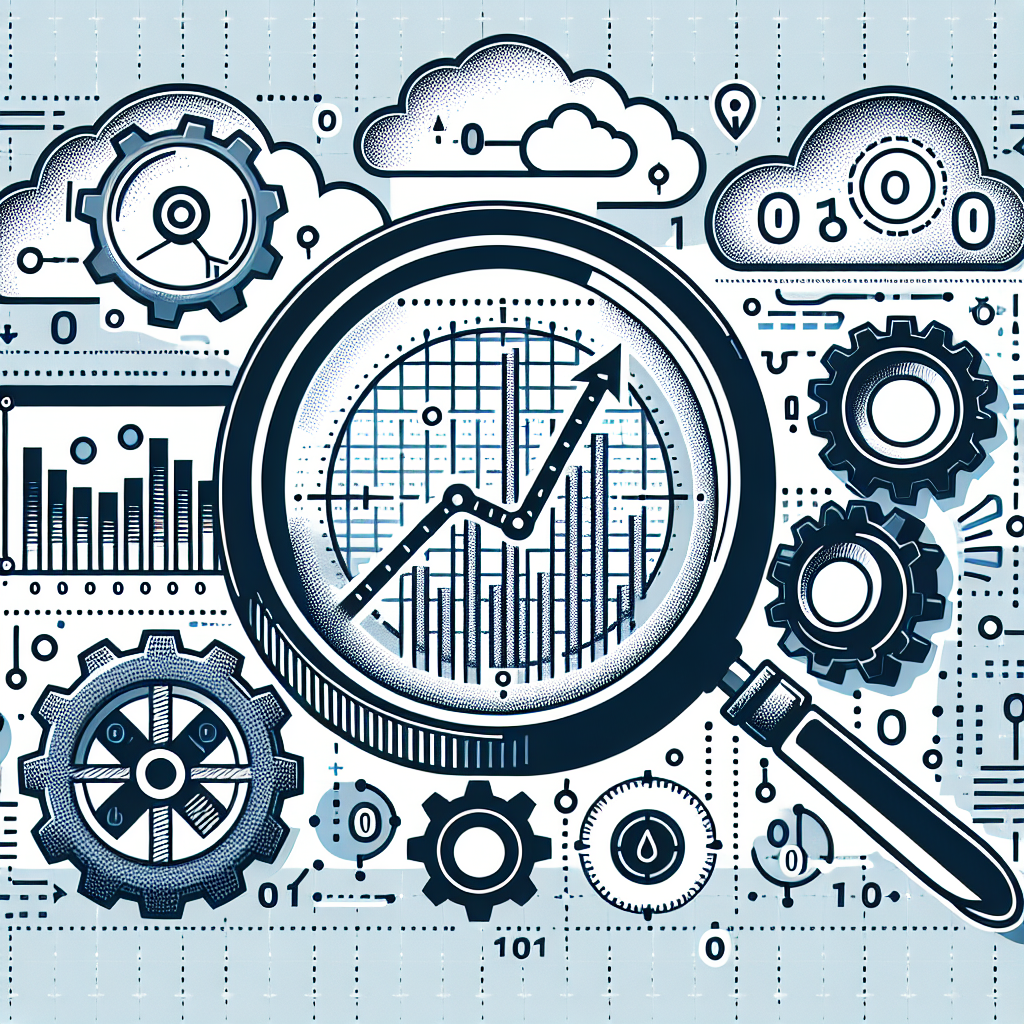
The Role of Data and Analytics in Proactive Maintenance
Proactive maintenance is a strategy that aims to prevent equipment failures before they occur, rather than reacting to them after they happen. This approach can save businesses time and money by minimizing downtime and reducing the need for costly repairs. One key component of proactive maintenance is the use of data and analytics to identify potential issues before they become serious problems.Data and analytics play a crucial role in proactive maintenance by providing insights into the health and performance of equipment. By collecting and analyzing data from sensors, machines, and other sources, maintenance teams can gain a better understanding of how equipment is operating and detect any signs of potential failure.
One of the main benefits of using data and analytics in proactive maintenance is the ability to predict when equipment is likely to fail. By analyzing historical data and using predictive modeling techniques, maintenance teams can identify patterns and trends that indicate when a piece of equipment is at risk of malfunction. This allows them to take proactive measures, such as scheduling maintenance or replacing parts, before a failure occurs.
Data and analytics can also help maintenance teams optimize their maintenance schedules and procedures. By analyzing data on equipment performance, usage, and environmental conditions, teams can identify opportunities to improve maintenance practices and maximize the lifespan of their equipment. This could include adjusting maintenance intervals, using predictive maintenance techniques, or implementing condition-based monitoring.
Furthermore, data and analytics can help maintenance teams track key performance indicators (KPIs) and measure the effectiveness of their proactive maintenance efforts. By monitoring metrics such as equipment uptime, maintenance costs, and mean time between failures, teams can assess the impact of their maintenance strategies and make data-driven decisions to continuously improve their processes.
In conclusion, data and analytics are essential tools for implementing a successful proactive maintenance strategy. By leveraging data-driven insights, maintenance teams can predict equipment failures, optimize maintenance schedules, and measure the effectiveness of their efforts. Ultimately, the use of data and analytics in proactive maintenance can help businesses increase operational efficiency, reduce downtime, and save money in the long run.

Maximizing Asset Performance with Proactive Maintenance
Maximizing Asset Performance with Proactive MaintenanceIn today’s fast-paced business environment, companies are constantly looking for ways to improve efficiency and reduce costs. One area where significant gains can be made is in asset management. By implementing proactive maintenance strategies, companies can ensure that their assets are running at peak performance levels, leading to increased productivity, reduced downtime, and ultimately, higher profits.
Proactive maintenance is a preventative approach to asset management that focuses on identifying and addressing potential issues before they escalate into major problems. By regularly monitoring equipment and performing routine maintenance tasks, companies can extend the lifespan of their assets and avoid costly repairs or replacements.
One key benefit of proactive maintenance is the ability to schedule maintenance activities during downtime periods, minimizing disruption to operations. By conducting regular inspections and servicing, companies can identify and address issues early on, preventing unexpected breakdowns and ensuring that assets are operating efficiently.
Another advantage of proactive maintenance is the ability to optimize asset performance through data-driven decision-making. By collecting and analyzing data on asset performance, companies can identify trends and patterns that can help them make informed decisions about maintenance schedules and resource allocation. This can lead to more efficient use of resources and improved asset performance over time.
In addition to improving asset performance, proactive maintenance can also help companies comply with regulatory requirements and industry standards. By keeping detailed records of maintenance activities and inspections, companies can demonstrate compliance with regulations and ensure that assets are operating safely and reliably.
To implement a proactive maintenance program, companies should invest in tools and technologies that enable them to monitor asset performance in real-time, such as sensors, IoT devices, and predictive maintenance software. By leveraging these technologies, companies can proactively identify issues and take corrective action before they impact operations.
Overall, proactive maintenance is a critical component of effective asset management. By taking a preventative approach to maintenance, companies can maximize asset performance, reduce downtime, and ultimately, achieve higher levels of productivity and profitability. By investing in proactive maintenance strategies, companies can position themselves for long-term success in today’s competitive business landscape.
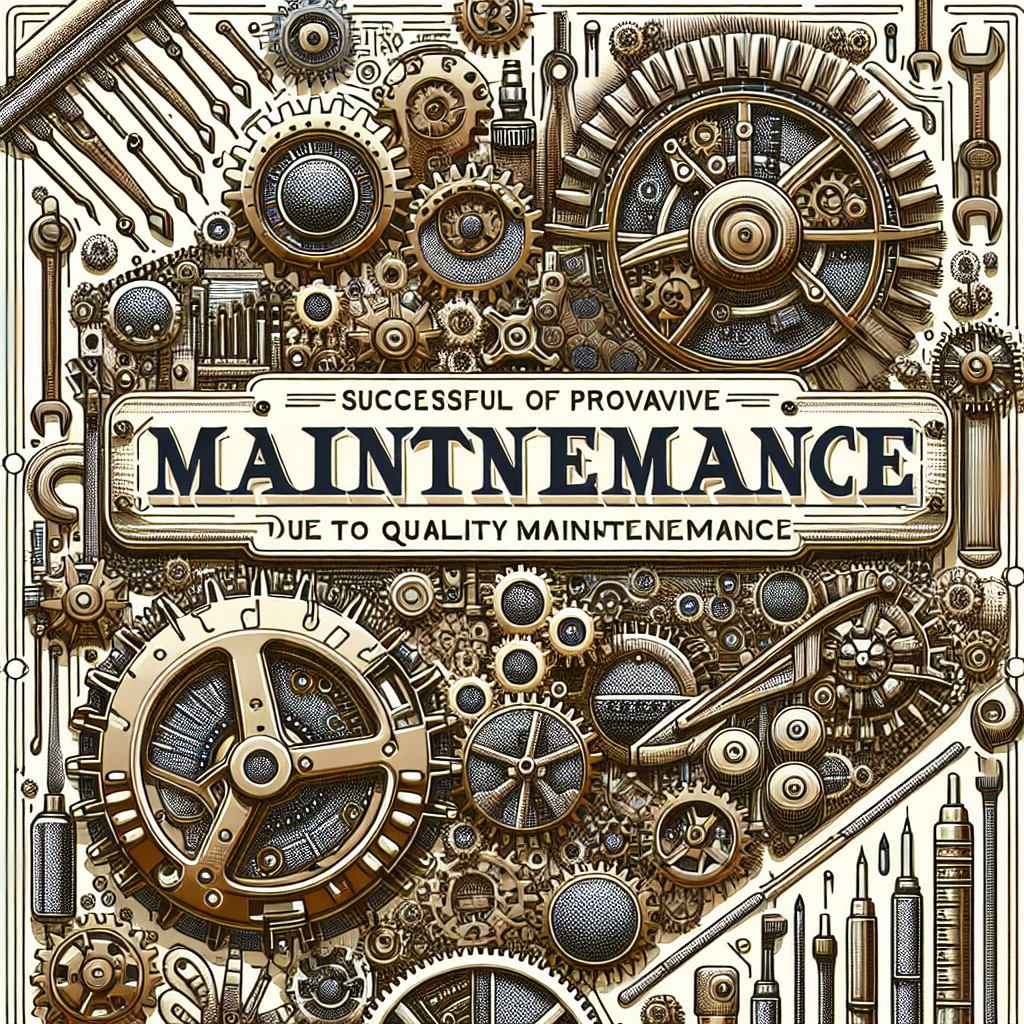
Case Studies: Real-Life Examples of Success with Proactive Maintenance
Proactive maintenance is a key strategy for ensuring the smooth operation of equipment and machinery in industries such as manufacturing, healthcare, and transportation. By regularly monitoring and maintaining equipment before issues arise, companies can prevent costly breakdowns and downtime, ultimately improving productivity and profitability.To understand the benefits of proactive maintenance, let’s take a look at some real-life case studies of companies that have successfully implemented this strategy.
Case Study 1: Manufacturing Company
A large manufacturing company implemented a proactive maintenance program for their production line equipment. By conducting regular inspections, lubrication, and cleaning of machines, they were able to identify and address potential issues before they escalated into major problems. As a result, they saw a significant decrease in unplanned downtime and a noticeable increase in production efficiency. The company also saved money on costly repairs and replacement parts, ultimately improving their bottom line.
Case Study 2: Hospital
A hospital implemented a proactive maintenance program for their medical equipment, such as MRI machines and X-ray machines. By scheduling regular maintenance checks and calibrations, they were able to ensure that the equipment was always in top working condition. This not only improved patient care by reducing the risk of equipment failure during critical procedures but also saved the hospital money by extending the lifespan of their expensive equipment.
Case Study 3: Transportation Company
A transportation company implemented a proactive maintenance program for their fleet of vehicles. By regularly servicing and inspecting their trucks, they were able to identify and address potential issues such as worn-out brakes, tires, and engine components. This proactive approach not only improved the safety of their drivers and passengers but also reduced the likelihood of costly breakdowns on the road. As a result, the company saw a decrease in maintenance costs and an increase in overall fleet efficiency.
In conclusion, these case studies demonstrate the tangible benefits of proactive maintenance in various industries. By taking a proactive approach to equipment maintenance, companies can improve productivity, reduce downtime, and ultimately save money in the long run. If you’re looking to enhance the performance and reliability of your equipment, consider implementing a proactive maintenance program in your organization.
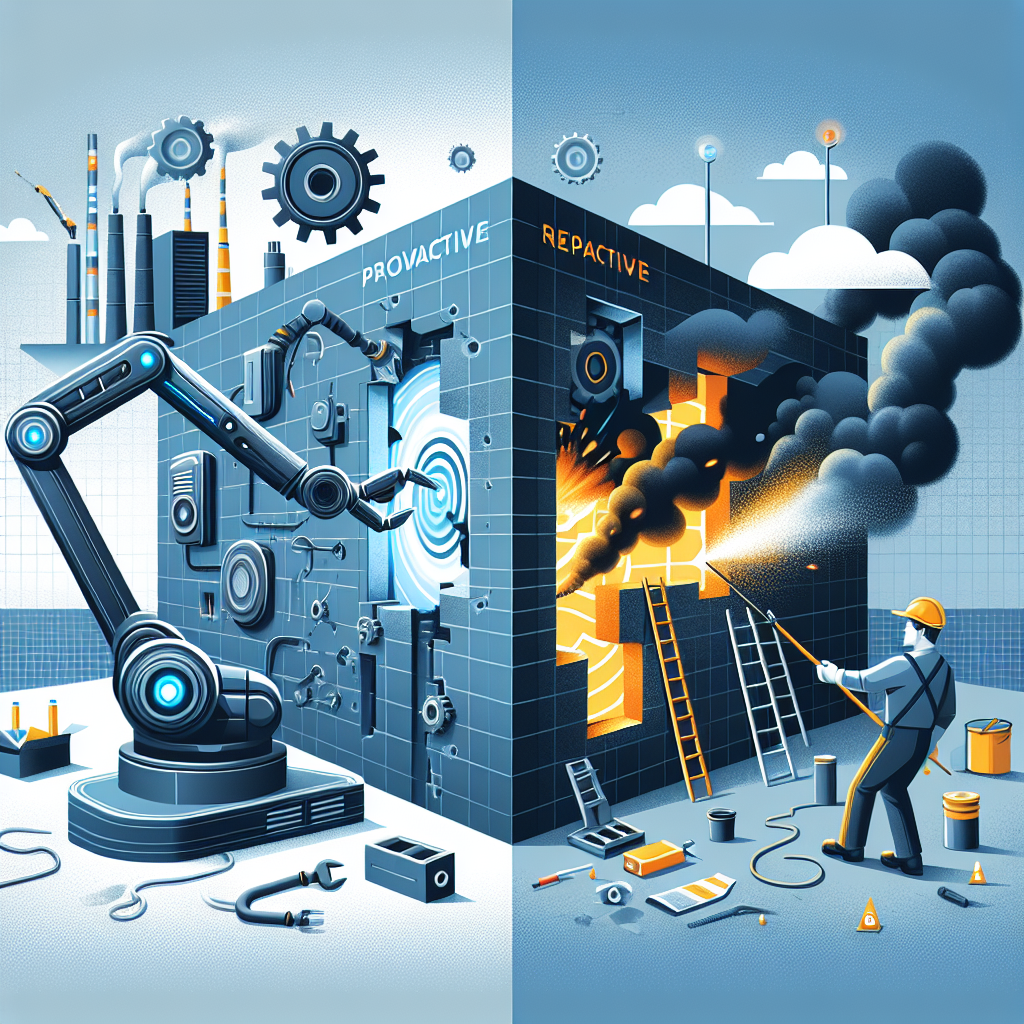
Proactive Maintenance vs. Reactive Maintenance: Which is Right for Your Business?
As a business owner or manager, one of the key decisions you’ll have to make when it comes to maintaining your equipment and assets is whether to take a proactive or reactive approach. Both proactive and reactive maintenance strategies have their own benefits and drawbacks, so it’s important to consider which one is right for your business.Proactive maintenance involves regularly scheduled inspections, maintenance, and repairs to prevent breakdowns and extend the lifespan of your equipment. By taking a proactive approach, you can identify and address potential issues before they become major problems, saving time and money in the long run. This can help minimize downtime, improve efficiency, and reduce the risk of costly emergency repairs.
On the other hand, reactive maintenance involves waiting until equipment breaks down before taking action. While this approach may seem more cost-effective in the short term, it can lead to increased downtime, lost productivity, and higher repair costs. Reactive maintenance can also result in a negative impact on customer satisfaction and damage to your company’s reputation.
So, which approach is right for your business? The answer depends on a variety of factors, including the size and complexity of your operations, the criticality of your equipment, and your budget constraints. In general, proactive maintenance is recommended for businesses that rely heavily on their equipment for day-to-day operations or have high-value assets that require regular upkeep.
However, if your business has limited resources or operates in a less demanding environment, reactive maintenance may be a more practical option. In some cases, a combination of both proactive and reactive maintenance strategies may be the most effective approach, allowing you to address immediate issues while also planning ahead for future maintenance needs.
Ultimately, the key to successful maintenance management is finding the right balance between proactive and reactive strategies. By investing in regular maintenance and monitoring, you can prevent costly breakdowns and ensure that your equipment operates at peak performance. Whether you choose to take a proactive or reactive approach, the important thing is to prioritize maintenance as a critical aspect of your business operations.
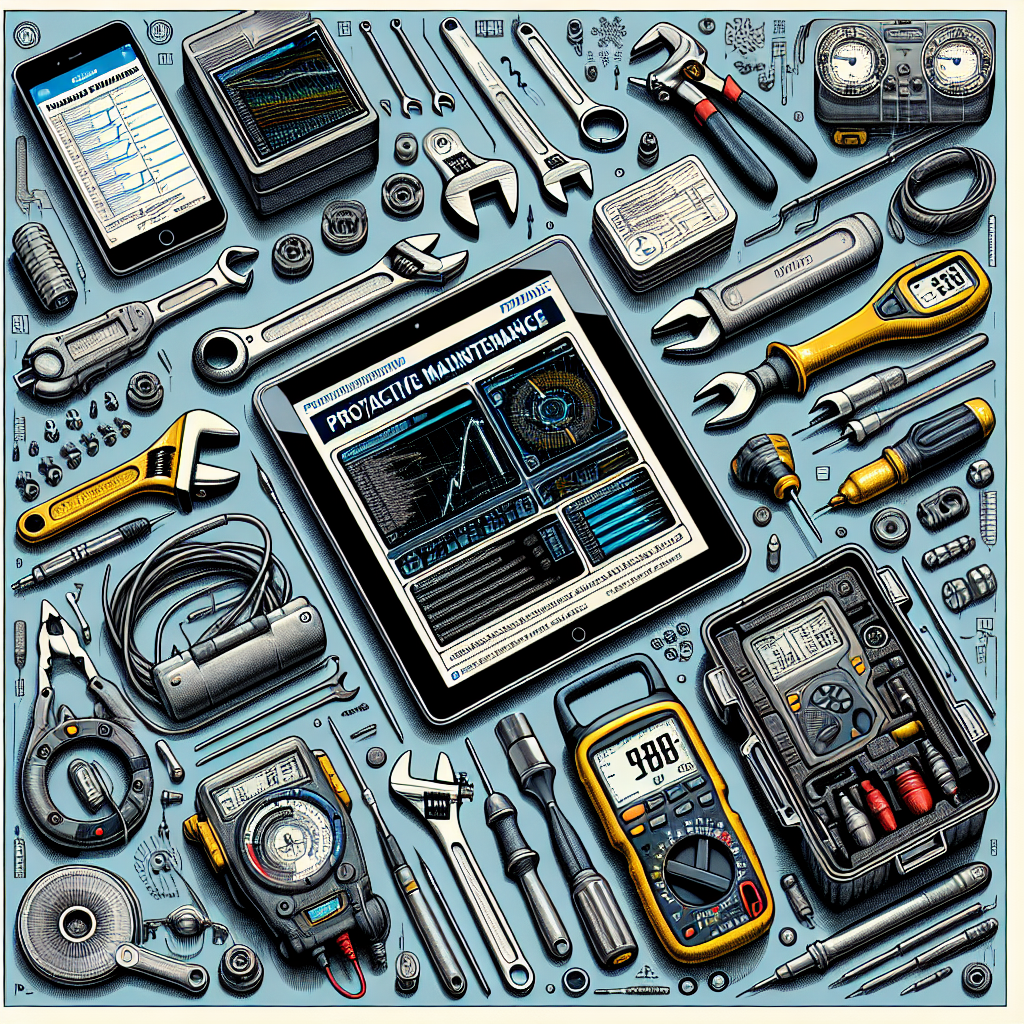
The Top Tools and Technologies for Proactive Maintenance
Proactive maintenance is an essential practice for businesses looking to minimize downtime, increase efficiency, and reduce costs associated with unexpected breakdowns. By utilizing the right tools and technologies, companies can stay ahead of potential issues and ensure their equipment is running smoothly. Here are some of the top tools and technologies for proactive maintenance:1. Predictive maintenance software: Predictive maintenance software uses advanced algorithms and machine learning to analyze data from equipment sensors and predict when maintenance is needed. This allows businesses to schedule maintenance before a breakdown occurs, reducing downtime and avoiding costly repairs.
2. Condition monitoring sensors: Condition monitoring sensors can be attached to equipment to track performance metrics such as temperature, vibration, and energy consumption. By monitoring these metrics in real-time, businesses can identify potential issues early and take proactive steps to address them.
3. Asset management systems: Asset management systems help businesses track and manage their equipment inventory, maintenance schedules, and service history. By centralizing this information in one system, companies can easily identify which assets require maintenance and when, leading to more efficient maintenance practices.
4. Remote monitoring tools: Remote monitoring tools allow businesses to track equipment performance and receive alerts on their mobile devices or desktop computers. This enables maintenance teams to quickly respond to issues, even when they are not on-site, reducing downtime and improving overall equipment reliability.
5. Augmented reality (AR) maintenance tools: AR maintenance tools use augmented reality technology to provide maintenance technicians with real-time instructions, schematics, and troubleshooting guides. This helps technicians perform maintenance tasks more efficiently and accurately, leading to faster repairs and increased equipment uptime.
6. Internet of Things (IoT) devices: IoT devices can be embedded in equipment to collect and transmit data on performance, usage, and maintenance needs. By connecting equipment to the internet, businesses can access real-time data and analytics to make more informed maintenance decisions.
In conclusion, proactive maintenance is a critical strategy for businesses looking to maximize equipment uptime and reduce maintenance costs. By leveraging the right tools and technologies, companies can stay ahead of potential issues and ensure their equipment is running smoothly. From predictive maintenance software to IoT devices, there are a variety of tools available to help businesses implement proactive maintenance practices and achieve operational excellence.

Implementing a Proactive Maintenance Strategy: Tips and Best Practices
Proactive maintenance is a crucial aspect of any successful maintenance strategy. By implementing a proactive approach, companies can prevent equipment breakdowns, reduce downtime, and ultimately save time and money in the long run. In this article, we will discuss some tips and best practices for implementing a proactive maintenance strategy.1. Conduct regular inspections and assessments: One of the key components of a proactive maintenance strategy is conducting regular inspections and assessments of equipment and machinery. By regularly inspecting equipment, maintenance teams can identify potential issues before they escalate into more serious problems. This can help prevent breakdowns and prolong the lifespan of equipment.
2. Develop a preventive maintenance schedule: Another important aspect of proactive maintenance is developing a preventive maintenance schedule. This schedule should outline regular maintenance tasks that need to be performed on equipment, such as lubrication, calibration, and cleaning. By following a preventive maintenance schedule, companies can ensure that equipment is properly maintained and in good working condition.
3. Utilize technology and data: In today’s digital age, there are many tools and technologies available to help companies implement a proactive maintenance strategy. For example, companies can use software programs to track equipment performance and maintenance schedules, as well as sensors and monitoring devices to collect data on equipment health. By utilizing technology and data, companies can make more informed decisions about when to perform maintenance tasks and identify potential issues earlier.
4. Train maintenance staff: It is essential to invest in training for maintenance staff to ensure that they have the knowledge and skills required to implement a proactive maintenance strategy effectively. By providing training on equipment maintenance best practices, troubleshooting techniques, and new technologies, maintenance teams can better identify and address maintenance issues before they become major problems.
5. Implement a feedback loop: Finally, companies should implement a feedback loop to continuously improve their proactive maintenance strategy. By collecting feedback from maintenance staff, as well as equipment operators and other key stakeholders, companies can identify areas for improvement and make adjustments to their maintenance processes as needed.
In conclusion, implementing a proactive maintenance strategy is essential for companies looking to improve equipment reliability, reduce downtime, and increase operational efficiency. By following the tips and best practices outlined in this article, companies can develop a proactive maintenance strategy that helps prevent breakdowns and ensures that equipment is properly maintained for optimal performance.
